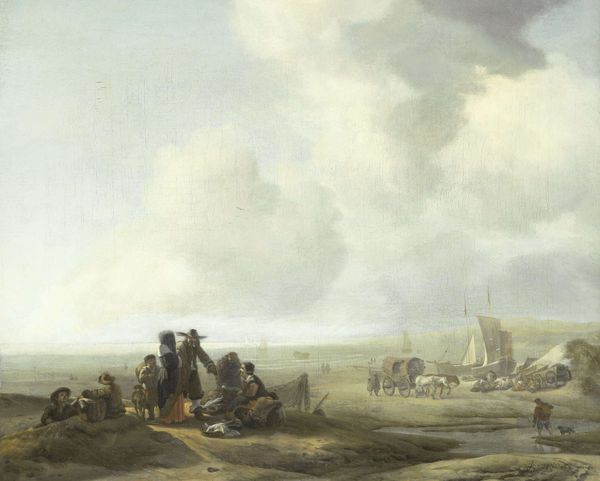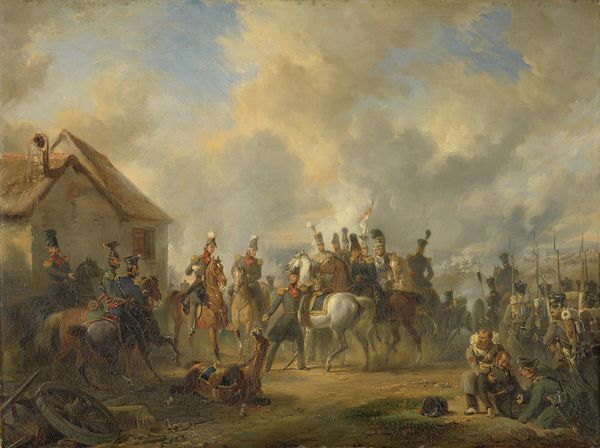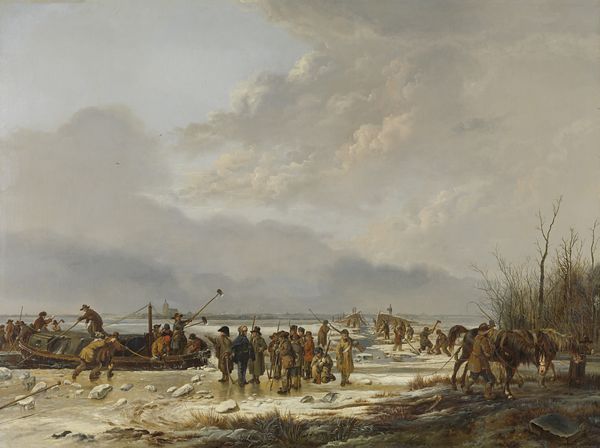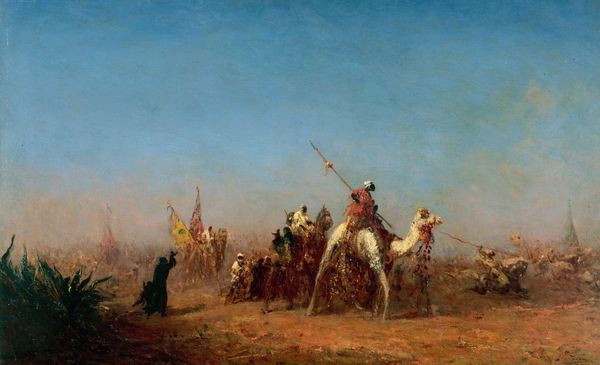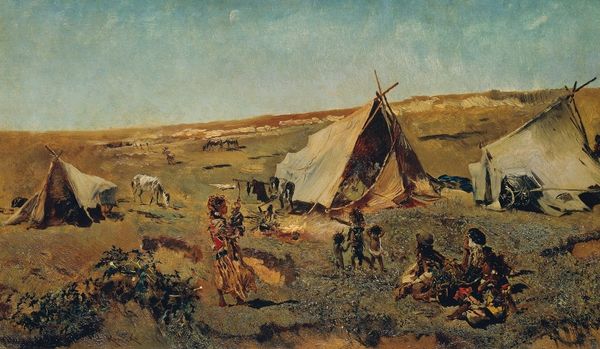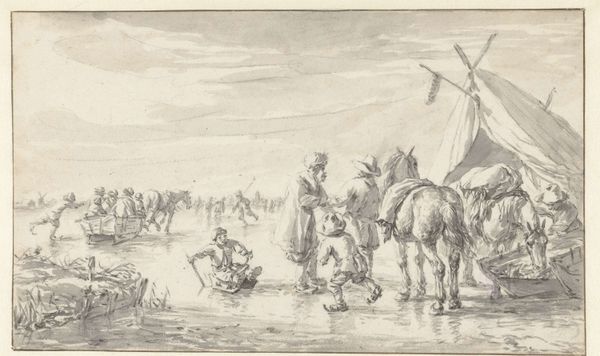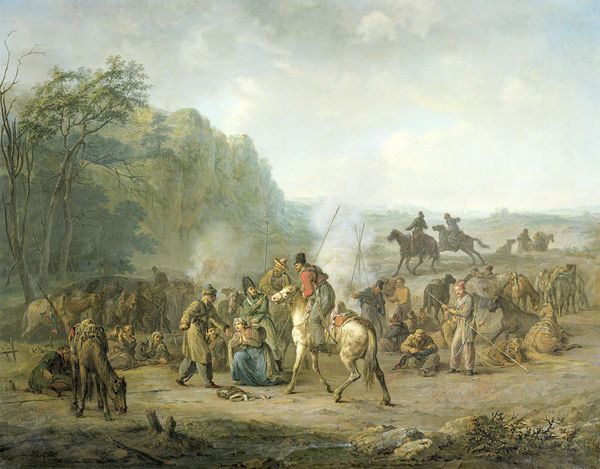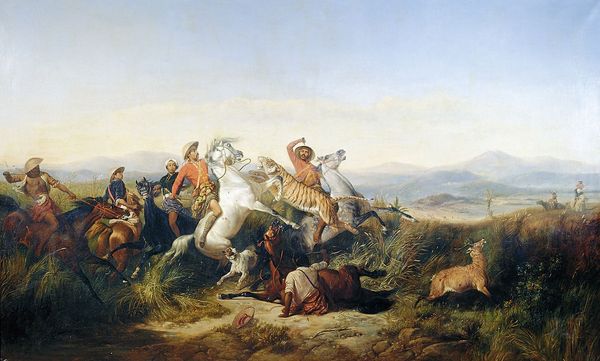
Bivouac at Molodechno, 3-4 December 1812: an episode from Napoleon's Retreat from Russia 1816
0:00
0:00
oil-paint
#
narrative-art
#
oil-paint
#
landscape
#
oil painting
#
romanticism
#
history-painting
Dimensions: height 48.5 cm, width 64.4 cm, thickness 1.0 cm, depth 7.6 cm
Copyright: Rijks Museum: Open Domain
Editor: This is "Bivouac at Molodechno, 3-4 December 1812: an episode from Napoleon's Retreat from Russia," painted by Johannes Hari in 1816. The desaturated oil paint gives a desolate feel, almost like looking at a faded photograph. What do you see in this piece? Curator: I see layers of symbolic significance built upon a foundation of human suffering. The frozen landscape is more than just a setting; it's a metaphor for the frozen hopes and dreams of Napoleon's retreating army. Note how the artist has rendered the fire, a small point of warmth, yet it’s surrounded by immense cold – representing fleeting hope amidst overwhelming despair. Editor: So, the fire represents hope, however small? Curator: Precisely. Fire has always been a potent symbol of life, warmth, and civilization. In this context, though, it highlights the vulnerability of these soldiers. Notice too, how Hari uses a pyramidal composition anchored by that very fire? Pyramids in art often convey stability, but here it feels ironic, almost mocking. The actual pyramid is straw which could burst into flame. Is that not also evocative, metaphorically, of the fate of those at Molodechno? Editor: I never thought of the straw bale as a pyramid. Curator: Consider the placement of figures, too. The two soldiers huddled closest to the flames are set apart, almost iconic, aren't they? Consider their uniforms: These men are officers in a time of chaos. What do those men represent, in contrast to the suffering infantry? Editor: It is hard to decide which element carries the most emotion; each aspect reinforces the others to create an overwhelming feeling of dread. Curator: The painting is a powerful visual text on loss, resilience, and the cruel indifference of history. Understanding its symbolic language allows us to engage with it on a much deeper level.
Comments
No comments
Be the first to comment and join the conversation on the ultimate creative platform.
